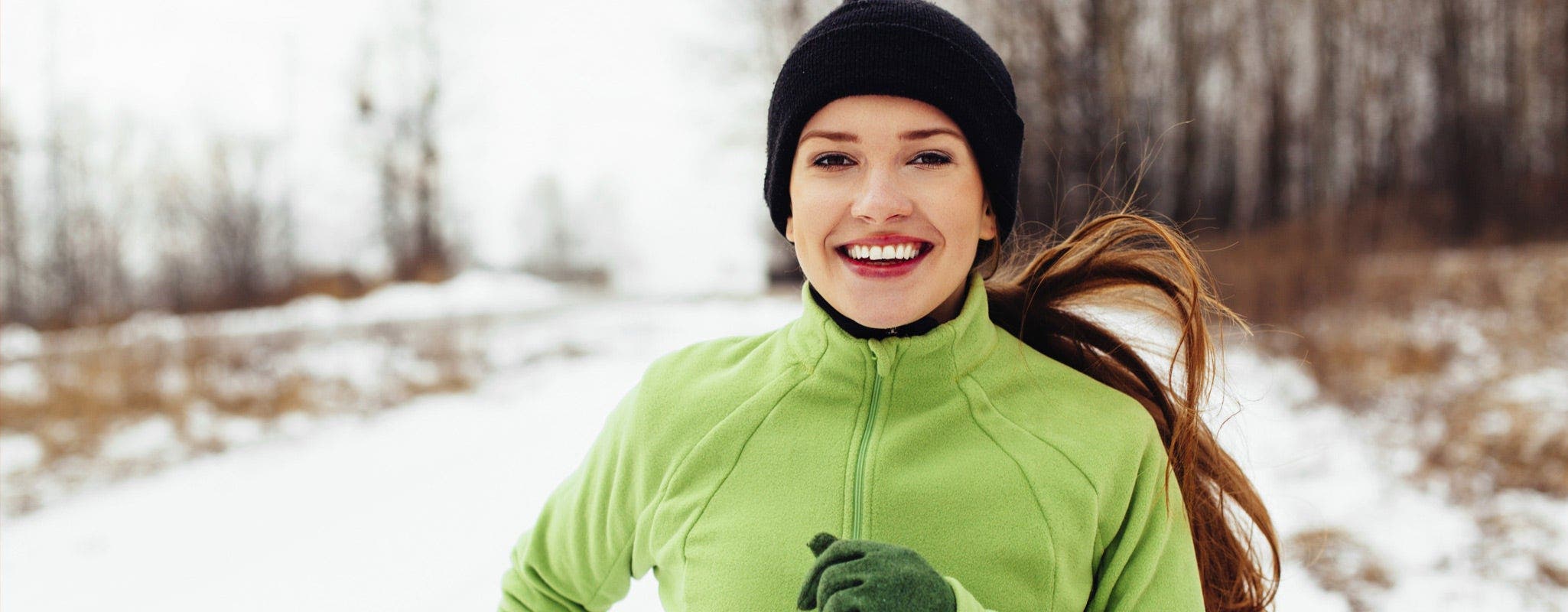Winter Exercise Survival Guide


Winter temperatures have plunged below zero and you feel like hibernating until spring in front of the TV and a crackling fire. The thought of trudging through the snow shivering to keep warm makes your blood run cold.
But there’s hope for those tempted to hide inside. Warming up to winter activities actually helps conquer the January blahs, say fitness experts.
For Leah Epstein, a personal trainer and nutrition and wellness specialist, winter is a very special time of year.
“Winter can be a missed opportunity,” says Epstein, owner of Equilibrium Lifestyle Management. “Part of the reason people get depressed in winter is because they hibernate.”
Often, the hardest part is taking that “first step out the door,” says Ed Mark, manager of the Running Room store in Toronto’s trendy Yorkville. He suggests people trick themselves into getting dressed to go out for a walk lasting a “couple of minutes.” Once outside, more often than not people tend to go much farther than they originally intended.
There’s lots of “neat” clothing on the market for walking or running that will keep people warm and dry, he adds (The trick is layering.)
“One of the key benefits of walking is having the energy to do so many things … to play with your kids for one,” says Mark, whose store and many others in the Canadian chain offer 10-week clinics, which teach clients how to turn walking into a workout.
“Your entire lifestyle improves, and exercise tends to suppress your appetite.”
If you prefer not to join a class, Epstein says it’s best to find activities you can enjoy and turn into social events. “If you meet somebody for a walk and coffee, you’re more apt to go for a walk,” she says.
Sari Simkins, a Toronto-based registered dietitian and consulting nutritionist, says winter is a perfect time to enjoy what nature has to provide in the city’s parks or to engage in fun activities with your family - building a snowman, having a snowball fight or tobogganing.
Instead of hiring people to shovel your snow, Epstein says doing it yourself is a “great way” to burn off calories and increase muscle mass.
Fitness experts agree the key is having a realistic plan of action that fits exercise into your daily and weekly schedule.
“If you make it part of your lifestyle you’re more likely to stick with it,” says Dr. Sender Deutsch, director of midtown Toronto’s SHAPE Health and Wellness Centre. To keep to your fitness plan or goals, Dr. Deutsch suggests creating accountability for yourself. For example, if you stick to your plan, “reward yourself with a gift,” he says.
Epstein puts her running gear by her bed, and as soon as she gets up in the morning, she goes out for a run. Her reward is she has the rest of the day in front of her. “That way nothing else can come up (to keep me from running) as it may during the day,” she says. “I love to run in the winter because the humidity isn’t high and it’s easier to breathe.”
Deutsch says snowshoeing and cross-country skiing are two great activities that burn off calories and get you outside during the magic of winter. A 155-pound person can burn off about 600 calories an hour cross-country skiing if they’re going at a good rate, he notes.
But if you hit a string of days that are just too frigid to stay outdoors, Simkins suggests going to the nearest indoor mall and doing your walking routine there. Alternatively, try skipping rope or marching while watching the news at home, she says.
Epstein also recommends you just keep moving around the house - such as going up and down the stairs or cleaning. She also notes that lifting small weights of two-pounds in each hand or doing squats with an exercise ball are simple ways to help turn fat into muscle. Resistance bands, exercise tubes, and free weights available at stores like Canadian Tire are also easy to use and a great way to stay in shape indoors.
If your activities do take you outdoors, Epstein cautions that it is very important to stay hydrated.
“A lot of people don’t realize Canadian winters are dryer than most others,” she says. “You need to bring lots of liquids with you and drink continuously.”
And always, always stretch when you’re done.
“Stretching helps you get back on track for the next day,” advises Epstein. “You can get back to the slopes, or trails or sidewalks without any pain.”
